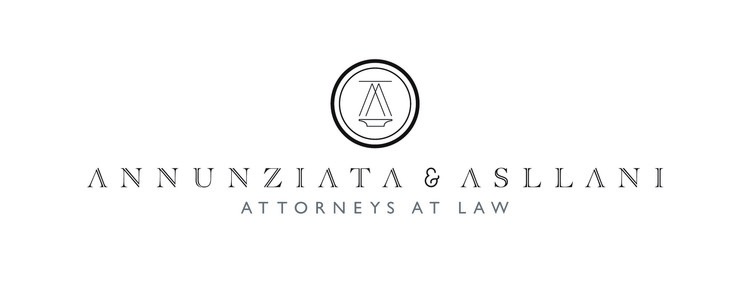- Call Us Today
- (646) 866 - 7878
- info@aandalegal.com
Surveys in New York Real Estate Practice

Wholesaling Property in New York
June 5, 2018
Choosing the right real estate agent
November 8, 2018I get asked this question at least once per transaction – “Will we have to buy a new survey?” – The answer will almost always be a resounding yes (with a limited few exceptions to be discussed below). About half the time, the next comment will most likely be “but last time I bought a house my attorney said he was going to do a survey inspection to save me some money”. The response to this is simple -that should NOT have been done. There is absolutely no coverage for the purchaser from an old survey.
Surveyors in New York are licensed by the Department of Education, Office of the Professions, and as licensed professionals they are subject to certain liability (like other professionals, i.e. attorneys, doctors, engineers, etc.), when they conduct their duties. Once they finish their field work, and prepare their final survey, the surveyor will then certify (or guarantee) that survey to a list of specific parties in a real estate transaction. This will usually be the purchasers, the title company and their underwriter (if the title company is an agency), and finally the lender (if there is one). This certification is the surveyor’s professional promise to those specific individuals/entities that the surveyor conducted the work according to the acceptable professional standards of their profession and that they take responsibility for their work product to those certified persons. Essentially this translates into: If the surveyor certifies the work to the purchaser and it is later determined that he made a mistake, the purchaser can sue the surveyor for professional malpractice (surveyors carry Errors and Omissions insurance for this purpose).
With the above being said, it behooves the informed purchaser, and savvy real estate legal practitioner to always advise the client to purchase a new survey, certified to the purchaser which depicts the most up-to-date state of facts of the property. This would include the property lines, encroachments or deviations onto those property lines from structures such as sheds, fences, etc., which may give rise to adverse possession. Upon review of the new survey the real estate practitioner is well equipped to fully explain to the purchaser the current state of the premises and structures thereupon and point out matters or problems that may create title marketability issues down the road. This article will now discuss the types of surveys commonly obtained in New York real estate transactions involving real property.
NEW SURVEY – as discussed above, there really is no substitute for this survey. A new survey shows the most current state of the premises and is certified to the current purchaser.
SURVEY UPDATE – in residential transactions a survey update means that an old survey which exists for the premises is updated by the same original surveyor that conducted the original work. Most of the time, this simply translates to a brand-new survey by that surveyor. NOTE: this is different from a survey update of commercial property. In those cases the surveyor that did the original work, simply changes the original survey to the extent that any changes exist, and then re-dates and re-certifies to the parties in the transaction.
SURVEY INSPECTION – this is a situation where an old survey exists (could be as recent as 1 year but as old as 50-60 years), and that survey is “updated” by a “visual inspection”. Basically, a layman (read: not licensed surveyor), goes out to the premises, old survey in hand, and makes a good old college try attempt at figuring out whether any changes to the premises have been made since the date of the old survey. Then a report is prepared and sent to the title company insuring the transaction. The title company reads the survey and the “inspection report” and makes any exceptions in its Title Report, Schedule B accordingly. Since the layman who does the inspection does not use any tools to measure, the only thing that can be derived from the report is the removal or addition of structures that are visible to the naked eye. So, the title company will take broad exceptions in order to protect their interest and the buyer will get a false sense of insurance. Furthermore, to make matters worse, the old survey is NOT certified to the current purchaser, so outside of the title company, the purchaser has no direct recourse against the professional surveyor. NOTE: Survey’s updated by laymen through a “visual inspection” are not permitted to be used for title insurance purposes by the New York Department of Insurance.
One common misconception is the role of the lender and their survey requirements. Most lenders that require surveys as part of their underwriting will accept a survey updated by “visual inspection”. Not to say that they don’t understand the risk involved in not having a new survey certified to them, but to accommodate a very large portion of the practice who utilizes survey inspections regularly, they agree to accept it.
What about those lenders that do not require a survey at all? A little known fact (perhaps) is that lenders in New York residential transactions (1-4 family properties), get automatic survey coverage in the policy jacket of their title insurance policy (ALTA 2006 version, as modified by the NY Standard Endorsement, replaced the previously often-provided NY Survey Endorsement) simply by virtue of the owner executing a survey affidavit (I swear that since I’ve lived here and based on my survey there have been no changes to my property). Therefore, the lender still gets coverage in its title insurance policy, even if no survey is read in at all. This of course does not equally apply to the purchaser. If there is no survey, the title company will take exception to “any state of facts that an accurate survey would show”. That means that if the buyer experiences a post-closing title issue related to a survey matter, and files a claim through its title company, chances are pretty good that it will be denied by virtue of that exception.
The adage here is simple. For a transaction that for many is one of the largest financial transactions of their life, saving 600-1000 and foregoing a survey or obtaining a less desirable survey inspection (75-150), simply doesn’t make much sense from a diligence perspective. The purchaser is making an investment and it makes sense to protect that investment from as many angles as possible. At Annunziata & Asllani we recommend all our homebuyers to obtain a new survey, and we discuss with them the potential pitfalls of not getting one. Give us a call today to discuss your transaction in detail.





